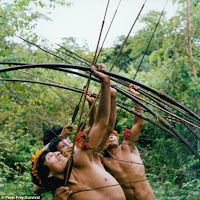________________
Showing defiance against the
Censorship laws in India and the CBFC, “League Against Censorship”- an
organized group of filmmakers, lawyers and journalists held a public meeting at
the Press Club Of India, New Delhi, vowing to plunge the modus operandi through
which a film has to pass before being screened.
They argued that the right of a
filmmaker to undertake his/her work without fear and interference is paramount
and cannot be subjected to restrictions. In an issued mission statement they
stated, “LAC’s mission is to fight against the State’s Role in Censorship of
Cinema and Media, and to fight for the most basic human right, that is, Freedom
of Speech and Expression.”
Rebuking the idea of censorship
Ranjit Kumar, a filmmaker said that he feels more like a rebel after some of
his films were obstructed by the Censor Board. “Indian filmmakers are guilty
until proven”, stated Mr. Kumar. While taking about the restrictions that comes
under the ambit of censorship, a documentary film maker Pankaj Bhutaria told
that some of the restrictions are absurd for example, one cannot make a film
which is against India’s interest with a friendly country. Now how could one
know that which is an unfriendly country to India? However, he added that in
case of Youtube and other new media platforms the films could be released
without any restrictions but for cinema halls and open theatres there must be
some notions of age appropriateness.
Meera Chaudhary, a co-director, narrated
the hardships and judicial limbo of the censorship which obstructed the release
of the documentary film “En Dino Muzaffarnagar” (2014) directed by her husband
late Shubhradeep Chakravorti. She said that the documentary was a kind of
investigation they did digging out the truth, whereas, the Central Board of
Film Certification stated that the film could insight communal violence which
was totally irrelevant. Years after the making of her film, she is still
battling for the upliftment of ban on her film through the High Court.
A renowned activist, feminist and
lawyer of the Supreme Court Karuna Nandi further put forward her views on legal
aspect of the censorship claiming that Cinematography Act of 1952 or CBFC must
under the ambit of Article 19 (1) of the constitution which provides basic
freedom of speech and expression, leaving it to court to decide the reasonable
restrictions that comes under clause (2) of Article 19 and not to the statutory
bodies. “Organizational work as RSS or the left is missing here in the
programme who are fighting for freedom of speech” Said Ms. Nandi pointing out
sceptically to the film makers in the meet. Another layer Arjun added that
there are also no specific qualification for being the chairman and member of
the CBFC as well as the advisory committee which somewhere degrades the
standard of the certifiers.
“Film viewers should also stand for no censorship as they watch more films than the filmmakers make”,
said political cartoonist Aseem Trivedi while ending the meeting. The programme
was attended by more than fifty people from different professional backgrounds showing consent with the idea of free censorship of films.








